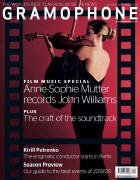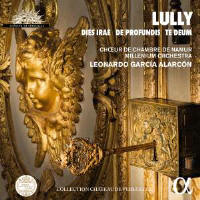Texte paru dans: / Appeared in: |
|
|
Outil de traduction (Très approximatif) |
|
|
Reviewer:
David Vickers These three ceremonial grand motets were included in Lully’s publication of assorted Motets à deux choeurs de la Chapelle du Roy (1684) but had been written for different occasions over a number of years. The Te Deum was first performed on September 9, 1677, in the chapel at Fontainebleau to celebrate the baptism of the composer’s own eldest son – whose godparents were Louis XIV and Queen Marie-Thérèse. Six years later, the Dies irae and De profundis were both performed at the funeral of MarieThérèse at the abbey of Saint-Denis on September 1, 1683, although De profundis had already been used as part of the tests for the new sous-maîtres of the royal chapel a few months earlier. Recorded in the chapel at Versailles, these three works are directed by Leonardo García Alarcón with vivacity and bold colours. The Namur Chamber Choir are full-blooded in dynamic illustrations of the Day of Judgement (Dies irae), extrovert invocations of praise (Te Deum) and contoured emotional contrasts depicting the depths of despair (De profundis). The choir function in tandem with the ‘petit choeur’ of six assertive soloists – contributions from high tenors Cyril Auvity and Matthias Vidal and bass Alain Buet are particularly eloquent. Double theorbo continuo players often overplay and dominate when accompanying the soloists, and thereby clutter the texture in passages that might have conveyed cathartic serenity. The Millennium Orchestra display crisp swagger, sentimental expressiveness, articulate violins, fruity oboes and bassoons, and splendid trumpets and thudding timpani, as the pieces variously demand. Notwithstanding momentary over-baked mannerisms, Alarcón’s interpretations are a zesty alternative to the finely judged accounts by Le Concert Spirituel and Herve Niquet. |
|




